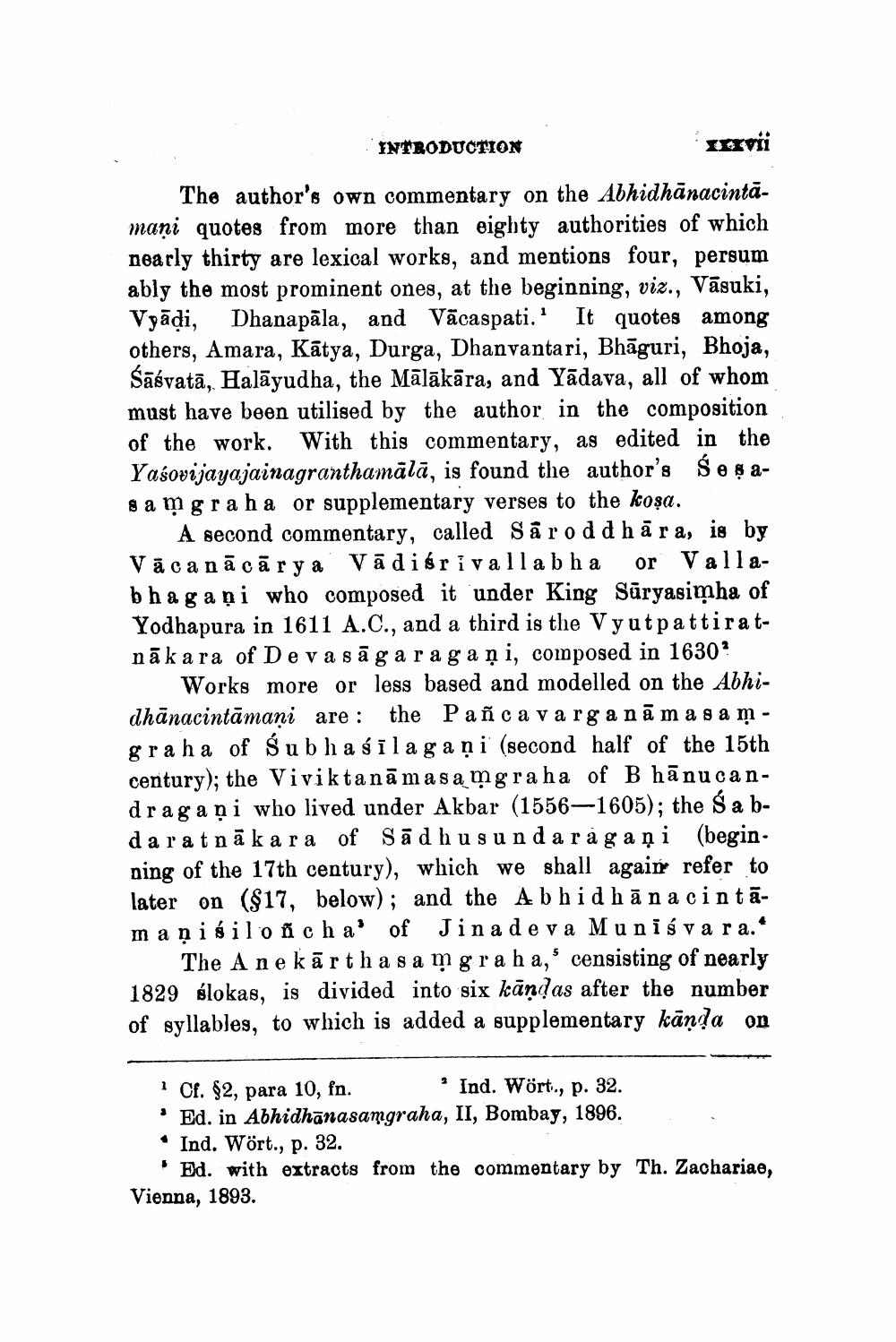________________
INTRODUCTION
The author's own commentary on the Abhidhānacintămani quotes from more than eighty authorities of which nearly thirty are lexical works, and mentions four, persum ably the most prominent ones, at the beginning, viz., Vasuki, Vyadi, Dhanapala, and Vacaspati.' It quotes among others, Amara, Katya, Durga, Dhanvantari, Bhaguri, Bhoja, Śāśvata, Halayudha, the Mālākāra, and Yadava, all of whom must have been utilised by the author in the composition of the work. With this commentary, as edited in the Yasovijayajainagranthamālā, is found the author's Seṣasamgraha or supplementary verses to the kosa.
A second commentary, called Saroddhara, is by Vacanācārya Vadisrivallabha or Vallabhagani who composed it under King Suryasimha of Yodhapura in 1611 A.C., and a third is the Vyutpattiratnakara of Devasagaraga ni, composed in 16301
Works more or less based and modelled on the Abhidhānacintamani are: the Pañcavargana masamgraha of Subhasilagani (second half of the 15th century); the Viviktanamasamgraha of B hanucandragani who lived under Akbar (1556-1605); the Śa bdaratnakara of Sadhusundaragani (beginning of the 17th century), which we shall again refer to later on ($17, below); and the Abhidhana cintamaniśiloñcha' of Jinadeva Munisvara."
XXXVII
4
The Anekarthasamgra ha," censisting of nearly 1829 slokas, is divided into six kandas after the number of syllables, to which is added a supplementary kanda on
4
1 Cf. §2, para 10, fn.
Ind. Wört., p. 32.
3
Ed. in Abhidhanasamgraha, II, Bombay, 1896.
Ind. Wört., p. 32.
'Ed. with extracts from the commentary by Th. Zachariae, Vienna, 1893.




